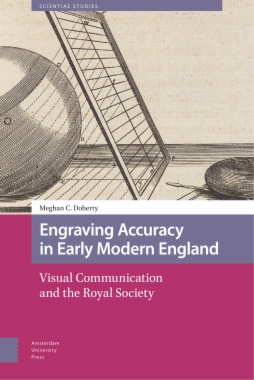Engraving Accuracy in Early Modern England traces major concepts including: the creation of the visual effects of accuracy through careful action and training; the development of visual judgment and connoisseurship; the role of an epistolary network in the production of knowledge; balancing readers’ expectations with representational conventions; and the effects of collecting on the creation and circulation of knowledge.
On the one hand, this study uncovers how approaches to knowledge production differed in the seventeenth century as compared with the twenty-first century. On the other, it reveals how the early modern struggle to sort through an overwhelming quantity of visual information - brought on by major changes in image production and circulation - resonates with our own.
- Cover
- Table of Contents
- Acknowledgements
- Introduction
- “Claiming the Resemblance of Life”
- “The Best in the World in this kind”
- “An accurate impression is in far higher esteem”
- “Each Judgement of his Eye”
- “Examining it according to my usual manner”
- 1. “Innocent Witch-craft of Lights”: Developing Visual Judgment through Printed Books
- The Magic of Projection
- “Draw and Engrave their Schemes with Delight and Assurance”
- “A fit subject for our kingdomes knowledge and practice”
- Conclusion
- 2. “A New Visible World”: Developing a Visual Vocabulary for the Microscopic
- The Visual Culture of Early Microscopy
- Developing a “sincere Hand and a faithful Eye”
- Making “a Plain Representation”
- Engraving “the True Form”
- 3. “Nearly Resembling the Live Birds”: Collecting and Collating for the Reformation of Natural History
- Resembling the Text: The Dodo (Raphus cucullatus)
- Resembling the Printed Record: The Golden Eagle (Aquila chrysaetos)
- Resembling the Living: The Smew (Mergus albellus)
- Resembling the Dead: The Great Grey Gull
- Conclusion
- 4. “These Rude Collections”: Accumulating Observations and Experiments
- “The present figure of Saturn”
- “With so much care and exactness”
- Conclusion
- Conclusion
- Bibliography
- Index

